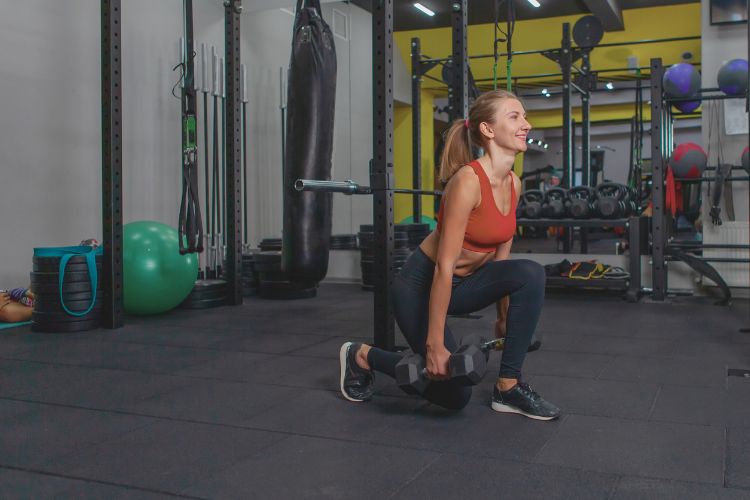Sign up for workout ideas, training advice, reviews of the latest gear and more.






Strengthening your back is one of the most important steps you can take toward building better posture, reducing pain, and supporting full-body strength. For beginners, however, back training can feel intimidating—especially when you’re unsure which exercises are safe, effective, and easy to follow. This 25-minute back workout routine for beginners is designed to eliminate the guesswork. You’ll train your upper, mid, and lower back with simple movements that require minimal equipment and zero advanced experience.
Whether you’re working out at home or in the gym, this routine helps you build foundational strength using slow-controlled reps, safe movement patterns, and low-impact exercises that protect your joints while still giving you a great burn. This SEO-friendly guide breaks down everything you need to know, from the benefits of back workouts to form tips and exercise breakdowns.
A strong back plays a bigger role in your health and everyday movement than most people realize. The muscles of your back—including your latissimus dorsi, rhomboids, trapezius, erector spinae, and even smaller stabilizer muscles—support almost every upper- and lower-body movement you make.
Hours of sitting, scrolling, or working from a computer can weaken the back muscles responsible for keeping your spine aligned. Training your back helps counteract that slouched posture by strengthening the muscles that pull your shoulders back and support a tall, confident stance.
Many beginners struggle with stiffness, soreness, or low-back discomfort. A well-structured back workout improves mobility, strengthens the spine-supporting muscles, and reduces the risk of injury from everyday activities.
Your back is part of your core—yes, your core is more than just your abs. Strong back muscles contribute to better balance, more efficient movement, and improved coordination.
Pulling strength is essential for daily tasks such as lifting groceries, carrying a suitcase, opening doors, and even supporting yourself during other exercises. This beginner workout builds the foundation for more advanced strength training later on.
To keep things simple and effective, this routine follows a circuit-style structure with controlled movement patterns that help beginners build confidence.
This keeps the intensity manageable for beginners while still strengthening the entire back.
Before starting any back workout, you need to loosen the spine, activate the shoulders, and warm up the muscles surrounding your shoulder blades. This reduces injury risk and helps you perform each exercise with proper form.
1. Cat-Cow Stretch – 30 seconds
Moves the spine through flexion and extension, warming your lower back.
2. Arm Circles – 30 seconds
Helps loosen shoulder joints and upper-back muscles.
3. Scapular Retractions – 30 seconds
Squeeze your shoulder blades together to activate the rhomboids.
4. Torso Twists – 30 seconds
Gently rotates the spine to improve mobility.
5. Dead Hangs or Band Pull-Aparts – 1 minute
Activates your lats and improves shoulder stability.
Below is the full routine with step-by-step guidance.
The bent-over row is the foundation of beginner back training and helps strengthen the lats, rhomboids, and rear shoulders.
It teaches beginners how to activate their back muscles and improves posture through targeted pulling strength.
If you don’t have a cable machine, a resistance band creates a beginner-friendly alternative for lat activation.
This movement mimics the traditional lat pulldown and builds strong and sculpted lats without heavy equipment.
A powerful bodyweight exercise for strengthening your lower back and improving core stability.
Strengthens the erector spinae, glutes, and upper back while helping beginners build safer spinal control.
The standing back fly targets the rear delts and upper-back muscles that support posture and reduce shoulder rounding.
It helps open the chest, improve posture, and strengthen neglected muscles in the upper back.
This beginner-friendly core and back stability exercise teaches proper spinal alignment.
Enhances core stability, improves balance, and reduces lower-back strain.
Take a 1-minute break, then repeat each exercise again.
This brings your total workout time to 25 minutes including warm-up.
A proper cool down helps release tension in your back and restore flexibility.
1. Child’s Pose – 30 seconds
Gently stretches your lower back.
2. Seated Forward Fold – 30 seconds
Lengthens the entire posterior chain.
3. Standing Lat Stretch – 30 seconds per side
Targets your lats and spine.
This routine was built to target every area of your back without overwhelming you. Below are key benefits you can expect:
Improved scapular strength helps prevent shoulder rounding and enhances overall upper-body strength.
With consistent training, beginners will notice lean muscle definition across the lats and upper back.
Stronger mid- and lower-back muscles help maintain proper alignment throughout the day.
Lifting, bending, twisting, and carrying become easier and safer.
Each exercise includes easier and more challenging variations as your strength improves.
To keep your results moving, follow the progression plan below.
Here’s how to ensure each workout gives you the best results possible:
Beginners often rush. Slow reps increase muscle engagement and reduce injury risk.
Your core protects your back. Keep it activated during every movement.
Master form first—THEN increase resistance.
Three workouts per week is better than one overly hard session.
This helps ensure proper posture and alignment.
Beginners often fall into the same traps that hold back progress. Avoid these:
This causes strain instead of strengthening muscles.
Swinging weights reduces muscle activation.
Breathing supports your spine and helps muscles work properly.
A cold back is more prone to strain.
Your back is half your core—balance is essential.
This 25-minute back workout routine is ideal for:
If you’re looking for a simple-but-powerful back routine that supports long-term fitness, this is it.
A strong back is more than a fitness goal—it’s a long-term investment in your health, posture, and confidence. This 25-minute beginner back workout gives you everything you need to start your journey safely and effectively. Stick with it consistently, focus on controlled movement, and celebrate every bit of progress.
You’re not just getting stronger—you’re building a resilient foundation that will support your entire fitness journey.
Looking for more ways to build strength and support your fitness journey? Check out our in-depth guides: “45-Minute Full Body Dumbbell Blast: Efficiency Meets Results” for a solid total-body challenge, “20-Minute Arm HIIT Workout: Build Strength Burn Fat and Sculpt” to tone those upper-body muscles, “The 45-Minute Leg Day Workout for Serious Strength and Growth” for lower-body power, “This 10-Minute No-Repeat HIIT Workout is Your Fat Burn Answer” when you’re short on time, and “The Ultimate 20-Minute Treadmill Workout for a Major Calorie Burn” to mix cardio with strength. These routines complement today’s 25-minute back workout and help you build a well‐rounded fitness habit.
Stay up to date on the latest women’s health, fitness and lifestyle trends and tips.